Knowing Your Historical Design
Styles
By Neil Blevins
Created On: May 24th 2021
Software: None
Art History wasn't exactly my favorite class in University, I was
horrible at memorizing dates. But it
turns out that what I learned there was super important in my later
life as a concept artist. Not only so that when the Art Director uses a
term like "Baroque"
I have some clue what they're talking about, but because I could take
what I learned from art history and use it to define art styles for
fictional universes, whether scifi or fantasy. This lesson will go over
a couple of major artistic styles from our own history, showing how
they
define a specific look through their shape language, and then how you
can use the knowledge of that
look to invent your own for your own species, world or universe.
You have two choices with this lesson, watch me discuss the issue in
the video below, or read the full text.
If It Ain't Baroque...
So there have been countless design styles throughout human history,
but there are several that come up pretty frequently, and define a look
that can be applied all over your world. The examples I'll use are
Baroque, Art
Deco, and Art Nouveau. These styles are applied to any number
of items, from objects like chairs, sofas, and lamps, to architecture
such as buildings, to even clothing and character items like jewelry.
So let's start with a chair!
The chair below is a Baroque chair. Baroque
is a style of European architecture, music, and art of the 17th and
18th centuries and is characterized by ornate
detail.

https://www.fabulousandbaroque.com/products/absolom-roche-side-chair-black-gold?variant=19394783623
Before we get into what makes the chair Baroque, let's look at some
more examples.
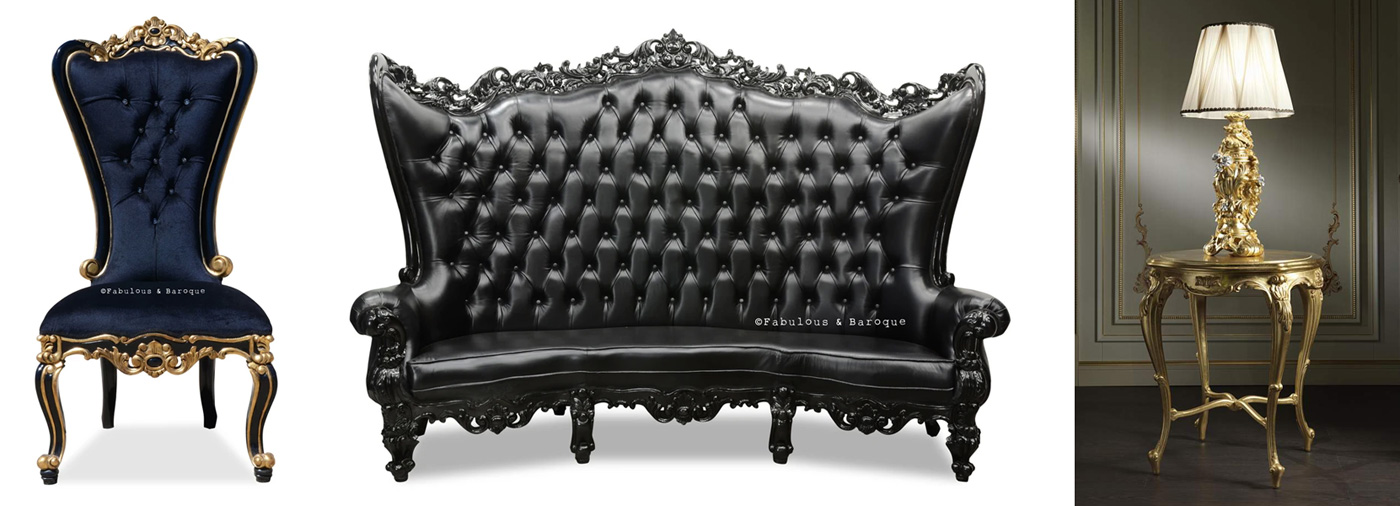
https://www.fabulousandbaroque.com/products/fabulous-and-baroques-absolom-roche-96-curved-sofa-black-leather?variant=26001789511
https://www.vimercatimeda.com/en/luxury-furniture/classic-lamps/lamps-classic-baroque/lamps-table-classic-baroque
Now that we've seen a number of pieces of Baroque furniture, we can
start seeing the trend.
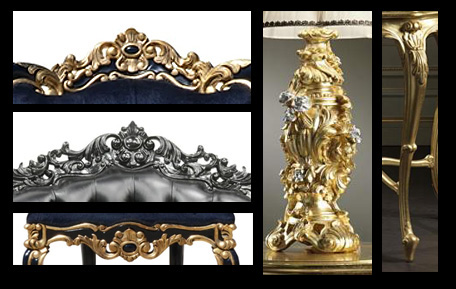
If I had to describe it in words, I'd say it's organic flowery detail.
But despite the organic nature of it, it's also very symmetrical
(notice the right and left side are always mirrors of each other). And
it frequently shows up in gold, although not always as the black couch
shows.
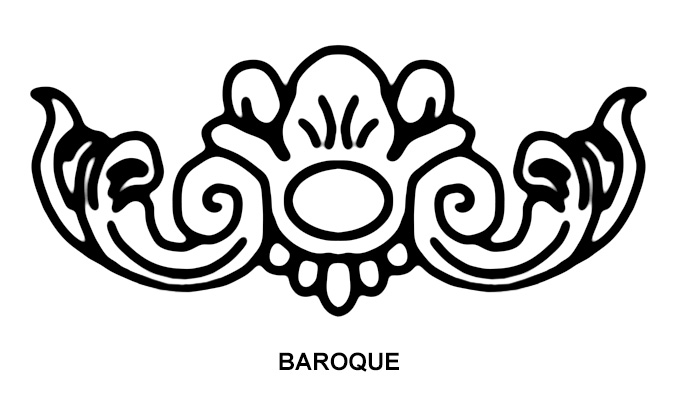
Baroque also appears in architecture, not just objects. Notice many of
the same elements, the flowery 3d dimensional details on
the top of the columns. And how symmetrical everything is.
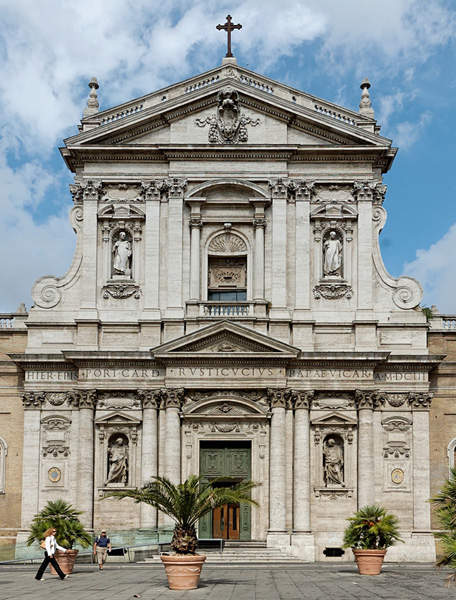
https://courses.lumenlearning.com/boundless-arthistory/chapter/architecture-of-the-baroque-period/
Many Styles
Now that we've boiled down the details that frequently define something
as Baroque, let's go back to our chair example, and look at different
chairs of different styles...
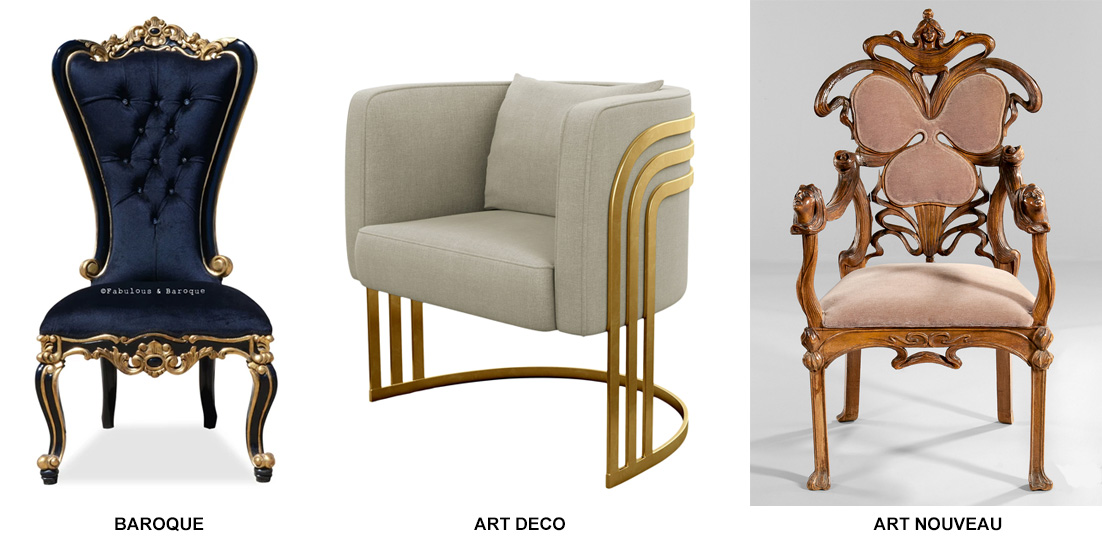
https://www.skinnerinc.com/auctions/3020B/lots/701
https://www.luxdeco.com/products/art-deco-tub-chair-fabric
They're all chairs, but they look very different from each other.
The second chair is Art Deco, which is a more modern aesthetic that
frequently has a streamlined feel, like you're going fast in a train or
a plane. Notice how the 3 long swooping lines are the legs. They almost
appear like racing stripes, or action lines in a cartoon. Other
details also make up the Art Deco style, but for the sake of this
lesson, let's just focus on this one aspect of Art Deco shape language.
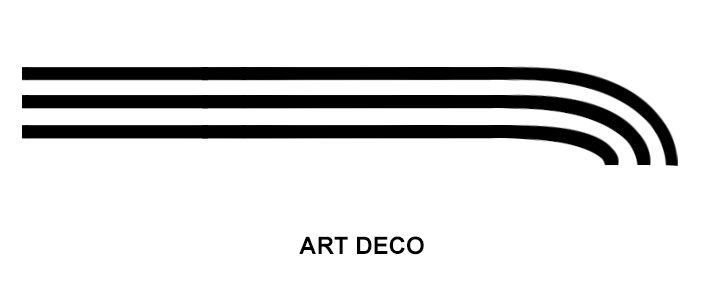
The third chair is Art Nouveau. And while, like Baroque, it is also
organic
and flowery, it has a number of key differences. First off, while this
chair is symmetrical, Art Nouveau is frequently far less symmetrical
than Baroque. Second, instead of small little concentrated details in
an area, the flowery elements are larger, more swooping and flowing.
Almost like crazy flower stems. Also, since Art Nouveau is supposed to
be connected with nature, you're
far more likely to see natural wood as a material.
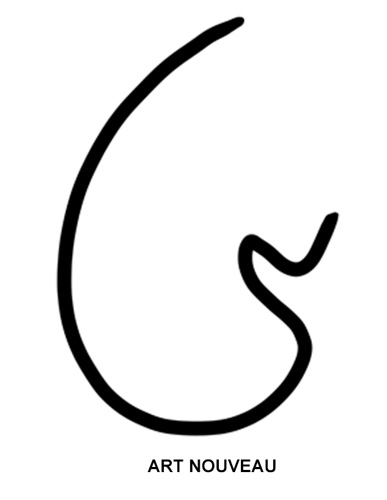
Here's some more examples of objects in these 3 styles.

https://www.elevatorscenestudio.com/blog/2020/7/18/extraordinary-art-deco-elevator-designs-from-around-the-world
https://grassfire.org/interior-doors-styles-matching-of-dominant-designing-style-of-a-door-leaf-through-examples/style-baroque-doors-design/
https://www.bespokelights.co.uk/shop-by-era-c1/art-deco-lighting-c13/dauphine-tiffany-art-nouveau-table-lamp-p1884
https://www.furniturelightingdecor.com/art-deco-table-lamp
And the styles certainly don't stop there. There's Arts And Crafts,
Gothic, Brutalist, Rococo. And that's just a few of the western art
styles. You have other countries and cultures from Africa to Asia, and
each area themselves have dozens of sub styles to study. And after
looking at enough examples, I bet you can pinpoint the attributes that
define the look.
So Why Do I Need To Know This
Stuff Anyways?
First, say you're about to work on a movie or a game, and the art
director says "We're going for a baroque style". Now you may not be the
expert in baroque architecture or furniture, but if you at least know
the basics of
what baroque looks like, you can immediately speak their language, and
have something helpful to add to the conversation. And having something
important to add to the conversation is how you become indispensable at
your job. And of course, after you've had the
discussions, you go back and do an even deeper dive into the design
style through books and the internet.
The second situation is a mashup. It's quite common to take 1 or more
styles and mix them together for a film or game. For example, maybe
you're on a game and the director says that this world is going to be a
mashup of scifi, Art Deco and Baroque. For example, Lynch's Dune film
from the 80s has a lot of elements of
Scifi, Baroque and Art Deco. So knowing these styles will give you an
immediate picture in your head. You can use that knowledge to clarify
the intentions of the art director, like saying "Would
Lynch's Dune be a good example of the overall look we're going for".
Knowing your styles helps you communicate more effectively and faster.

And third, sometimes you have to make up a style from scratch. And if
you already have a good idea of how that happens in real life, how a
few design attributes and how shape language can appear in everything
from chairs to lamps to
buildings, it's far easier to create something brand new. For example,
one of my favorite examples is the dwarfs from the Lord Of The Rings
films. The design motif and shape language for the dwarves were
diamonds, triangles and angular gem shapes. Not only did those shapes
represent the gems the dwarves mined from the ground, but it also
represented their physical bodies, they were short, wide, stout, and
immovable from the ground (like the pyramids with their solid
triangular base). Knocking a dwarf off their feet is tough, and so are
these shapes.
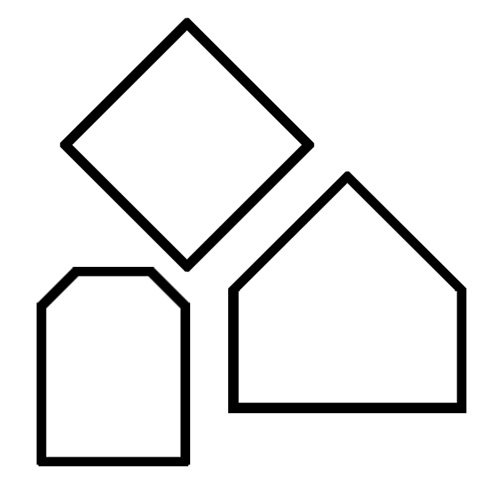
And just look at all the ways they integrated
that idea into the furniture, items and architecture of the dwarves...

Conclusion
So while I could do a long art lesson on each and every one of these
art movements, my goal with this lesson was to give you a little taste,
and to give you a method for analyzing art movements through history
based on reoccurring shape themes. And that will help you not only work
in those styles, but gives you an idea how to invent your own styles
for a completely made up world.
This site is ©2025 by Neil Blevins, All rights are reserved.
Return to
NeilBlevins.com












